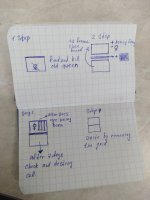Hi all!
Queens of instrumental insemination are no different from queens of natural mating, except for one detail - the pheromone in queens of artificial insemination begins to be produced 2-3 weeks later.
Therefore, there are some nuances with introducing them into a new hive.
Such queens live 2-3 years without problems. My oldest instrumental insemination queen was 4.5 years old.
Most likely the problem is in some incorrect actions or methods of work by those who perform instrumental insemination.
There is one exception, when queens are placed in a nucleus - this is single drone insemination. Otherwise, all artificial insemination queens are tested in the main colonies. Insemination is not very difficult. It is more difficult to select the right combination of genes and test these queens for the desired characteristics, of which there are more than 10 species. You need to “see” and have a certain amount of intuition.
I've probably already said this, but I'll say it again. At the initial stages of work, do double insemination. 2x2 µl, 3x3 µl. By doing this you will improve your skill and the percentage of surviving queens will be higher. With this dosage of sperm, queens will definitely live for a couple of years. (if you do everything right)
If you have any additional questions, I will try to answer them.
P.S. Alastair, how are the remaining queens doing?
Queens of instrumental insemination are no different from queens of natural mating, except for one detail - the pheromone in queens of artificial insemination begins to be produced 2-3 weeks later.
Therefore, there are some nuances with introducing them into a new hive.
Such queens live 2-3 years without problems. My oldest instrumental insemination queen was 4.5 years old.
Most likely the problem is in some incorrect actions or methods of work by those who perform instrumental insemination.
There is one exception, when queens are placed in a nucleus - this is single drone insemination. Otherwise, all artificial insemination queens are tested in the main colonies. Insemination is not very difficult. It is more difficult to select the right combination of genes and test these queens for the desired characteristics, of which there are more than 10 species. You need to “see” and have a certain amount of intuition.
I've probably already said this, but I'll say it again. At the initial stages of work, do double insemination. 2x2 µl, 3x3 µl. By doing this you will improve your skill and the percentage of surviving queens will be higher. With this dosage of sperm, queens will definitely live for a couple of years. (if you do everything right)
If you have any additional questions, I will try to answer them.
P.S. Alastair, how are the remaining queens doing?



